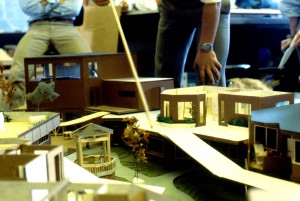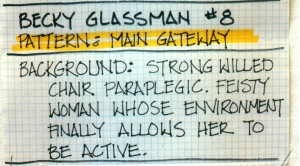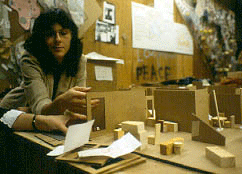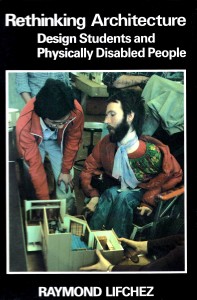During two years as a Visiting Scholar at the University of California in Berkeley from 1978, I learned just about everything I now know about design for people with disability. I had two amazing teachers: professor Ray Lifchez (see https://ced.berkeley.edu/ced/faculty-staff/raymond-lifchez)
and Mary Ann Hiserman.
I’ve written about my great debt to Mary Ann before.
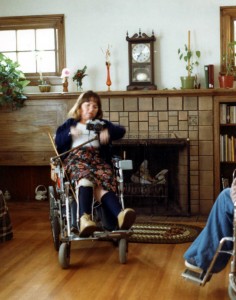
Here I want to attach the two chapters I wrote as part of Ray’s study into teaching first-year undergraduate architecture students about the needs of students with disability. It’s reported in this beautiful book, edited by Ray:
The first chapter I wrote, “The Vitalizing Challenge of Dissonance”, described some aspects of the studio course, including my apprehensions about the project. In the classroom was a group of profoundly disabled ‘consultants’, who were there to assist the young students in their projects of designing mixed use developments to cater for people with disability. I chronicled their expectations and fears (and some of mine as well). Some students were defeated or at least bewildered and perplexed by the contradictory information provided by these advisors. The students were not a homogeneous group. We all needed help in dealing with our feelings in this most confronting context.
Here’s my first chapter:
Wendy Sarkissian Chapter 9 The Vitalizing Challenge of Dissonance in Lifchez 1987
In the next chapter, I tried to recount how the students experienced the intensive studio experience. Many found ways to relate to — or avoid relating to — the physically disabled consultants. Using structured journal exercises, in-class observations and unstructured interviews with nineteen students, I sought to understand how the students engaged with the consultants, how they accommodated and avoided them in their design responses and how they avoided disability-related issues. Most importantly, I discovered the many ways students reviewed and reassessed their preconceptions and experiences.
Here is my second chapter:
Wendy Sarkissian Chapter 10 How the Students Saw It in Lifchez 1987
Here are some photos of this amazing pedagogical experience:
